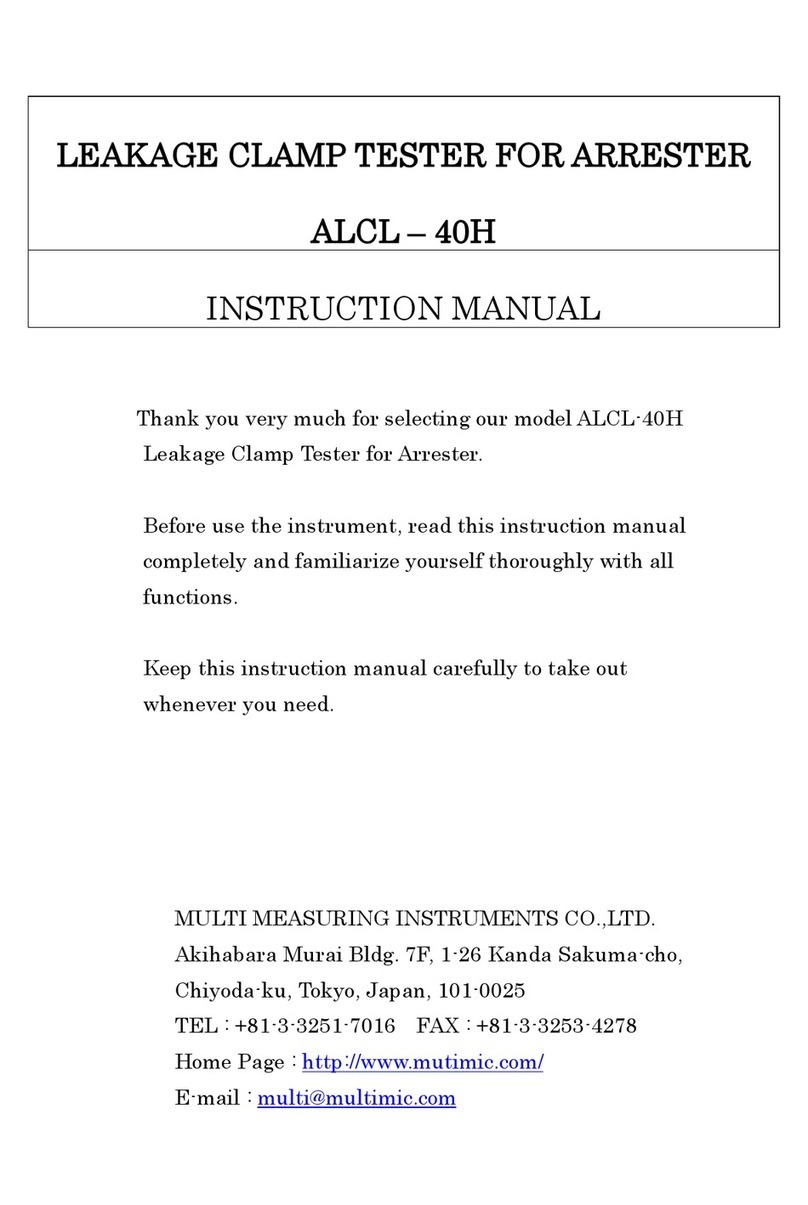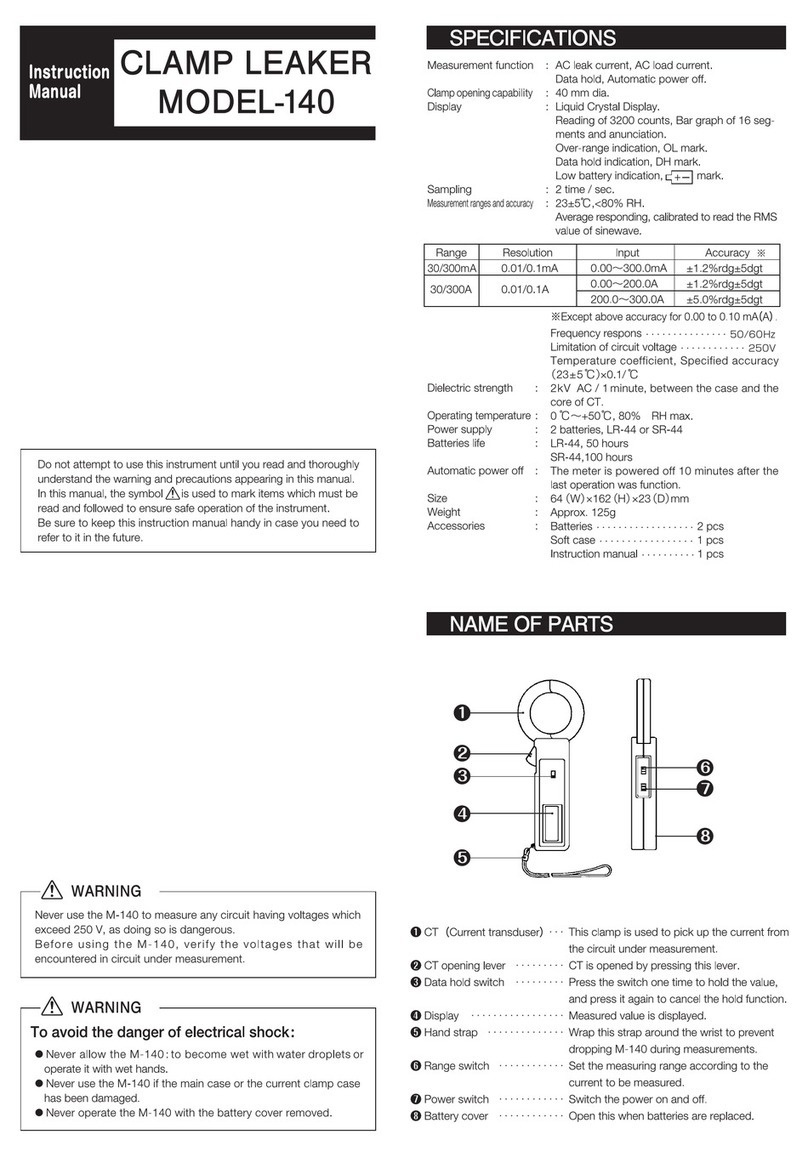⑤Current Range Select Switch: When power switch on, the display is for Ior current
(~A) measurement. By pressing this switch once, the
display becomes Ior of single phase (1φ/Ior).
By pressing once again, the display becomes Ior ofΔ
three phase (Δ/Ior) and by pressing further once,
the display becomes Ior of Y three phase (Y/Ior).
Set this switch correctly according to the circuit to
be measured.
When measuring Ior, the current range can be changed
by operation in the combination with ⑧Data Hold Switch.
As to the operation method, refer to “5. Change of Current
& Voltage Ranges” in this manual.
⑥Insulation Resistance : By pressing this switch, the insulation resistance value
Select Switch (MΩ) will be displayed by the calculation of voltage & Ior values.
For this measurement, the direct voltage input mode
is used. In case of non-contact voltage input, the
display become [----] and the insulation measurement
cannot be done in this method.
Make circuit setting correctly (Press once is for φ1,
twice is forΔand three times is for Y).
⑦Frequency Select Switch : Set the frequency of power supply to be measured.
⑧Data Hold (D-HOLD) : By pressing one time, DH (Data Hold) on LCD and it
will be released by pressing one more time.
⑨Liquid Crystal Display (LCD): Showing measured value, measuring mode and
battery condition on the display.
⑩Voltage Input Terminal : Voltage input terminals for line voltage measurement
(Red, White, Black) (500V range) and for resistive leakage current (Ior)
measurement.
For the measurement of line voltage, set the voltage
input mode to direct and use the direct voltage input
probe (voltage measurement is unable by non-
contact voltage input sensor).
For Ior current measurement, change the voltage input mode
by operation in the combination with ⑧Data Hold Switch.
As to the operation method, refer to “5. Change of Current
& Voltage Ranges” in this manual.
In details of wiring on Ior leakage current measurement,
refer to each [Wiring Method].
⑪Battery Cover (the reverse side) : Remove this cover to replace the batteries.
⑫Hand Strap : During measurement, avoid to fall down the instrument
by using this strap.






























